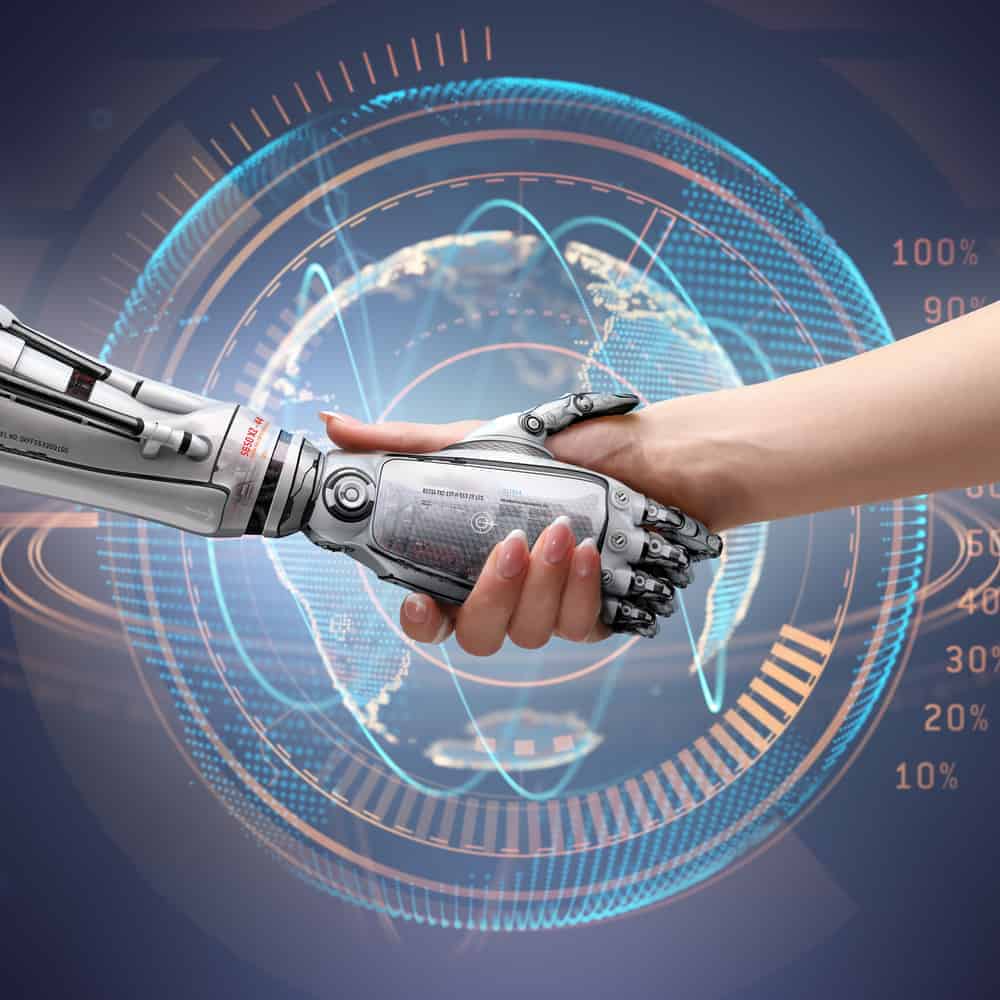Blog
Artificial Intelligence Innovates the Food Industry
Artificial Intelligence & Food Industry – 4 minute read
Artificial intelligence has caused innovations in the food industry, with much more expected. Artificial Intelligence is where computers perform tasks that usually require human knowledge. These tasks include decision-making, visual perception, speech recognition, language translation, and much more. The food industry, usually a little slow on the uptake of new technology, is well on its way to making AI integral to business as usual.
Opportunities to implement AI in the food industry
Food sorting
Sorting through fresh produce is hugely time-consuming and labor-intensive. Potatoes are typically classified by size so that the manufacturer knows which ones to turn into what type of product.
Discolored vegetables must be removed from the production line. Some producers are now using AI systems with cameras and infrared sensors to sort food. The advantages are fewer staff-hours on sorting, higher yields, less wastage, and more top-quality produce.
Supply chain management
Manufacturers are using AI to improve supply chain management in several ways: food safety testing and monitoring at every stage of the supply chain, as well as the ability to track products from the farm to the ultimate consumer. AI also enables more accurate predictions for better pricing management and inventory control.
Better employee personal hygiene
Excellent hygiene in a food plant is essential for food safety and compliance with regulations. In China last year, an AI-powered system to improve personal health in food workers was born.
The system monitors workers via cameras and uses facial and object-recognition technology to monitor whether workers are wearing the safety gear required by law. If it discovers a violation, it automatically produces images that can be reviewed. Its makers claim that this technology is more than 96% accurate.
Product development
One of the more tricky aspects of new product development is not being confident that a new item is going to be popular. Now, AI can use specific predictive algorithms and machine learning to model consumer preferences and predict people’s reactions to new flavors.
Equipment cleaning
Processing equipment needs to be kept scrupulously clean, and in the future, AI is expected to be able to do it for you. A team of researchers at the University of Nottingham are utilizing artificial intelligence to cut cleaning time and resource use (such as water, by between 20 and 40%), predicted to save millions of dollars per year.
Growing better food
Sentient is a company that is using AI to look at developing the perfect “recipe” for the perfect crop. Still, in its infancy, the system is looking at the effects of variables such as water stress, salinity, heat, and UV light on the herb, basil. Farmers are currently using AI to detect pests and diseases, to improve soil quality, and more. Further innovations are expected to impact other areas of the food industry in the future.
Addressing hunger
Hunger is a rising problem around the world for developing countries as well as developed countries. It is said that a third of all food produced globally is wasted. The food industry is optimally placed to address hunger by examining how we grow, distribute, and consume food.
The problem is the degradation of our oceans, soils, and freshwater, as well as the loss of biodiversity and forested land. Climate change is, of course, exerting mounting pressure on the already stressed food production chain. Natural disasters such as floods, droughts, and hurricanes pose an ever-increasing threat to crops, and millions of children around the world suffer stunted development due to insufficient nutritious food.
It is a sobering thought that there are estimated to be more than 800 million chronically hungry people on earth today. This number is expected to increase by at least another two billion people by the year 2050.
AI and machine learning have the potential to analyze all food-related data to allow for far more accurate predictions and recommendations for the food industry.
Ensuring a sustainable food supply
One of the biggest challenges facing the food industry is ensuring a stable supply of food that is sustainable for the future. Gaining access to staple ingredients such as grains, oils, and many more foodstuffs often rely on a complicated system of networks and partnerships.
AI and machine learning have great potential for maintaining logistical efficiency and food safety to ensure a stable food supply over time. Genetic programming and generative models can be utilized to study food market conditions, from production to distribution, more thoroughly and innovatively than ever before.
Models concerned with prediction and recommendation can be developed to analyze market factors and improve food supply stability meticulously.
The companies who are working with Artificial Intelligence
There are a growing number of innovative companies using AI to address various challenges in the food industry.
- Gastrograph AI utilizes machine learning and AI to study the consumer’s sensory perceptions of flavor and to predict consumer preferences regarding food and drink.
- TasteMap makes wine recommendations based on experience, environmental facts, and taste utilizing deep learning.
- Edamam uses natural language processing to extract food entities from unstructured text, allowing for real-time nutritional analysis of food recipes.
- Sure is trying to make it easier for people to find the right food businesses for them via machine learning and natural language processing.
- Instacart predicts food item availability via machine learning.
- Arla Foods has new AI software to improve estimates of how much milk cows will be able to produce in the future. In the past, this kind of prediction would take days to make as it was done manually. With this new software, the company can predict how much milk 1.5 million cows will produce in the future, and it’s 1.4 percent more accurate than in the past.





